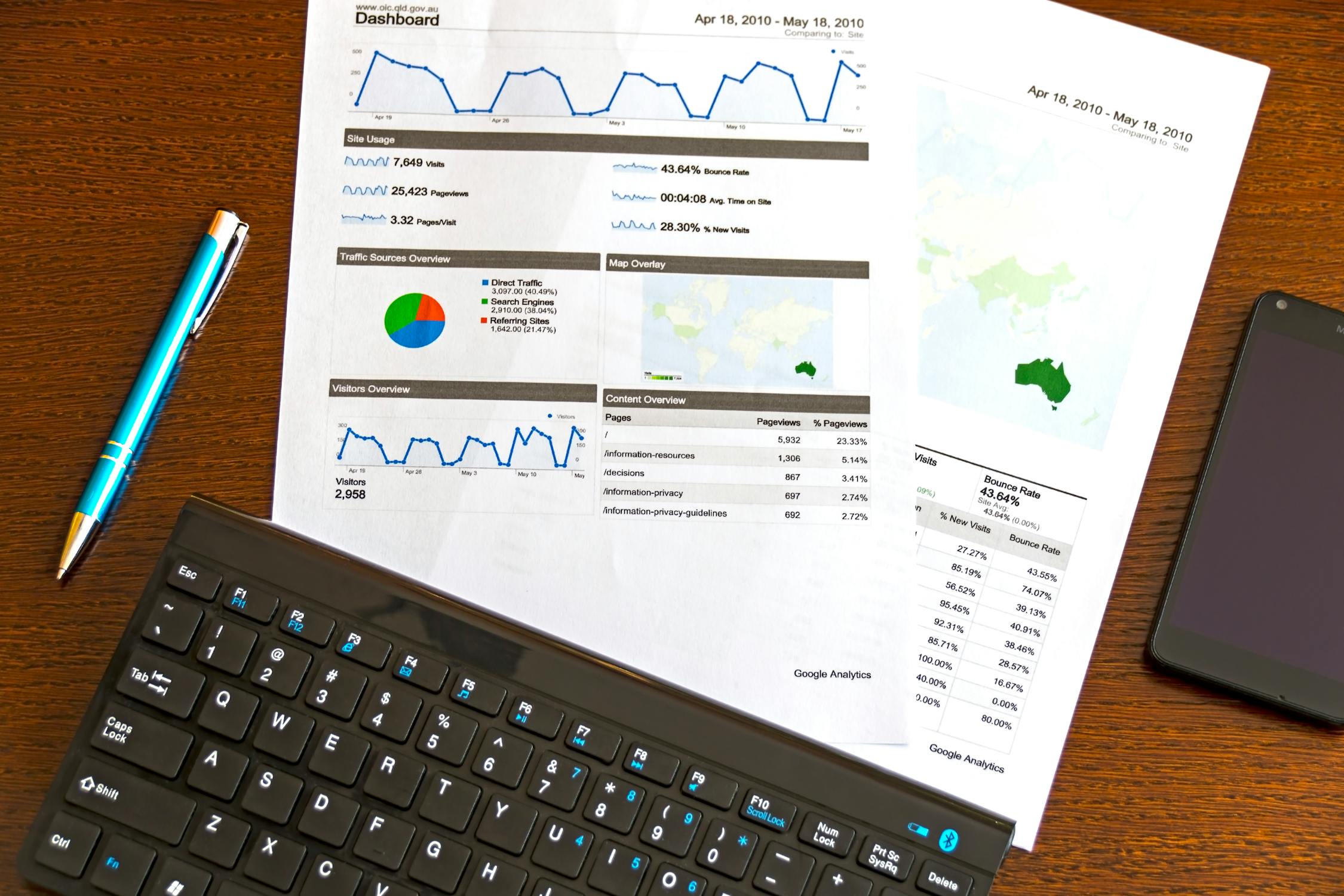- by Zlata Seregina Akkaoui
- Jun 08, 2025
5 Free AI Tools Every Analyst Should Try in 2025
- By Zlata Seregina Akkaoui
- Sep Fri, 2025
- in Tools

There are more AI helpers for data analysts than before. They are artificial intelligence-based free apps/websites to speed up data exploration, chart-making, formula writing, and even machine learning. With a few clicks, you can ask hard questions in English, get charts from raw data, or drag-and-drop a whole analysis pipeline. Here are five totally free AI tools (no sneaky paywall) analysts and students will want to explore in 2025. Each listing describes what it does, how it assists analysts, and genuine user feedback or reviews.
1. ChatGPT (OpenAI’s Free Plan)
What it does:
ChatGPT is a conversational AI chatbot based on OpenAI GPT models that comprehends natural language and generates text or code. In the free version, you can ask it questions, have ideas explained, and even generate basic code.
How it helps analysts:
You can describe a data problem to ChatGPT in your own words – such as "Explain what a cluster analysis does" or "Write Python code to calculate the average sales per region" – and it'll answer or generate code immediately. It can brainstorm ideas, summarize findings, suggest SQL queries, or interpret statistical results. Most users leverage ChatGPT as a quick "AI assistant" to speed up boring tasks like typing formulas, data cleansing steps, or result interpretation. It even understands some math and is able to walk through calculations step-by-step.
Why it's a game-changer in 2025:
ChatGPT's latest models are very proficient and frequently updated. Users say the new GPT-4-based versions ("4o") are notably smarter and faster than their predecessors. It also now possesses multimodal functionality – you are able to paste in an image of a chart and have it respond to questions about it. As an example, one reviewer explained how ChatGPT was able to review a chart image, extract the raw data from the image, and rebuild the table and analysis. All of these advanced features enable ChatGPT to be helpful with numbers and graphics. Importantly, the basic ChatGPT interface is still free to use (with conversational length limitations and without GPT-4 availability), making it one of the most accessible AI tools to try out.
Real-user review:
Most experts love how easy ChatGPT is to use. One user said:
"I used ChatGPT extensively for brainstorming… coding… data analysis and handling research-intensive tasks", appreciating its intelligence and speed.
Novices also like how useful it is for explaining concepts and checking their work. On the negative side, because it's free, sometimes it gives over-simplified or slightly incorrect responses (so always check!). But overall, ChatGPT is presented as a useful, powerful tool for data queries – great for on-the-spot help or as a second pair of eyes on your research.
Key features:
- Ask straightforward English questions and get code or answers.
- Generate or check SQL/Python/R snippets for data tasks.
- Summarize or interpret data output (e.g. regression results).
- (Free) GPT model with medium response length.
2. GraphMaker.ai
What it does:
GraphMaker.ai is a free browser-based tool that automatically turns data into graphs. You just upload a spreadsheet (CSV, Excel, Google Sheets, etc.) and talk to your data in natural language. For example, you might say "Show me sales by region as a pie chart" or "Plot revenue over time." Then, GraphMaker uses AI (behind the scenes, GPT-3) to generate the appropriate graph. It supports common chart types like bar charts, line charts, scatter plots, histograms, and pie charts.
How it helps analysts:
Hand-drawing charts can be time-consuming. GraphMaker enables analysts to skip coding or manual tweaking. You simply describe the chart you want, and the tool generates it in seconds. It is great for showing trends or differences quickly without needing to struggle with chart editors. You can edit your request ("stacked bars instead of grouped," "sort by value," etc.) and GraphMaker edits the chart accordingly. It literally makes charting 10x faster for many simple tasks. Since it is a web app, there is no installation – just upload data and start asking questions about it.
Why it's a game-changer in 2025:
The standard version of GraphMaker.ai is completely free and does not even require registration. It uses recent AI breakthroughs to interpret your commands dynamically. In 2025, this translates to the fact that you can attempt to talk to your data in an almost-chatbot style, then see a graphical result right away. It's especially notable because most upper-level charting software still involves manual input or coding; GraphMaker demonstrates how far "data chatbots" have come.
Real-user review:
Reviews say that GraphMaker is user-friendly and quick. One source explains:
It "makes it easy to create and customize charts" from raw data, and "the basic version of GraphMaker is free, and you don’t need to sign up to use its core features."
In practice, users find the interface extremely simple: you ask questions in the chat box and the chart appears. The free version has some limitations (basic customization and templates only), and extremely large or complex datasets can take a while to load. But as an instant-charting freebie, people are impressed. Generally, GraphMaker.ai is perfect when you're looking for a quick visual snapshot and don't have to fiddle with settings – an AI-powered shortcut to making nice-looking charts.
Key features:
- Natural-language graph generation: just describe the graph you require.
- Permits CSV/XLS and Google Sheets data upload.
- Creates bar, line, pie, scatter, histogram charts in seconds.
- No cost or signup needed for basic use
3. Formula Bot (Excel AI)
What it does:
Formula Bot is a collection of free AI "chatbot" tools for data and spreadsheets. At its center is an "Excel Formula Generator" – you type a request like "Calculate the average sales for each month" and it creates the Excel formula or VBA code for you. But it also includes other free tools: an AI chat for general data analysis questions, a sentiment analyzer, a PDF-to-Excel converter, an AI text-to-chart assistant, and more – all focused on spreadsheet and tabular data tasks.
How it helps analysts:
If you’ve ever struggled to remember the exact Excel function for a task, Formula Bot can save hours. It translates regular English (or even Spanish) into spreadsheet formulas or scripts. For example, it can generate FILTER, INDEX-MATCH, or complex IF formulas on demand. It also helps with data cleaning: you can tell it to "remove duplicates and sort by date," and it will generate the steps or code. For analysts who work with Excel or Google Sheets, that means less time googling formulas and more time analyzing results.
Why it's a game-changer in 2025:
Formula Bot's strength is that it wraps many utilities into one free platform. The creators advertise that it is "the single platform to analyze, visualize, transform and enrich your data… powered by AI." Indeed, it does offer many free tools, from formula creation to transforming PDF tables into spreadsheets. In 2025, when AI assistants are on everyone's mind, having a dedicated free assistant for spreadsheets is not typical. The site and social media channels are active, and it's promoted as a free, no-login answer to duplicating ChatGPT prompts.
Real-user reviews:
Users and reviewers remark that Formula Bot works well for general Excel operations.
Kim Komando – a veteran tech influencer – tweeted:
"Formula Bot is a free AI-based generator that converts your plain English… into a formula."
That is, it works for you as promised straight out of the box.
Users post on review sites:
It "saves time when working on massive data sheets."
It is not perfect, however: users criticize that occasionally the formulas need tweaking or the AI misunderstands a request.
One reviewer said:
"Many times formulas haven’t been generated right… plus ChatGPT gives the same responses for free so… I didn’t move to a paid version."
Practically, it's very handy for straightforward problems, but complex edge cases might still need to be checked manually. All in all, Formula Bot is a simple, free spreadsheet assistant – just don't forget to verify the results.
Key features:
- English to Excel/Google Sheets formula, function, or VBA translation.
- Provides data chat, SQL query builder, PDF→Excel, and other AI tools.
- Completely free to use, with no premium tier needed for core tools.
- Perfect for a beginner or someone who needs a formula or script concept fast.
4. Orange (Open-Source Data Mining Toolkit)
What it does:
Orange is an open-source, free data mining, visualization, and machine learning package. It provides you with a visual, drag-and-drop interface (termed "widgets") in which you build data workflows. For example, import a dataset, and then link visually widgets like "Select Columns", "k-Means Clustering", "Scatter Plot", "Classifier", etc. – no programming required. It's used in exploratory data analysis, creating prediction models, clustering, and interactive visualization (box plots, heatmaps, etc.).
How it helps analysts:
Orange simplifies advanced analysis. You don't write code, but assemble steps of analysis graphically. That is simple for beginners to learn concepts (you can visually see each step) and for professionals to prototype quickly. You can experiment with different algorithms by simply modifying widgets. Orange also has add-ons for text mining, network analysis, and so on, so it encompasses a large number of data tasks. If a data analyst needs to observe how various techniques execute on their data (classification, clustering, feature selection, etc.), Orange offers immediate visual feedback.
Why it's a game-changer in 2025:
At the time of writing in 2025, Orange is mature, established in education, and regularly maintained. Its interactivity coupled with its free status position it differently: institutions use it to teach data science, and professionals use it to visualize ideas. As it is open-source, one can extend it or extend it. In a time where AI software is often closed packages, Orange reminds us that there are effective free alternatives to data exploration.
Real-user reviews:
Clients often praise Orange's ease of use for those quick projects.
One Redditor data scientist:
Orange is "quite good for making quick pipelines".
Another said:
It was a "decent visual programming environment for experimenting" and best for newbies getting their feet wet.
Plain and simple, people find Orange great to learn and visualize from: it shows patterns and model outputs quickly without coding. The only discussed drawback is that it might not be able to support deep customization.
One user commented:
Lots of features "may not have as much customisability as you would like".
In addition, power users with extensive programming knowledge (pandas, scikit-learn, etc.) might like to write code as projects become more sophisticated. But for quick analysis, proof-of-concept models, and teaching, Orange is wonderfully handy.
As one reviewer put it:
Beginners were able to "carry out advanced data visualization and basic machine learning analysis" at the conclusion of an Orange workshop.
Key features:
- Free, open-source drag-and-drop visual workflow tool.
- Includes widgets for data import, visualization (plots), and plenty of ML algorithms.
- Ideal for analyzing data trends and fitting models without programming.
- Enables add-ons (text mining, bioinformatics, etc.) for specialized tasks.
5. KNIME Analytics Platform
What it does:
KNIME Analytics Platform is a free, open-source, low-code data analysis and data visualization tool. Like Orange, it uses a visual workflow interface, but it's targeted at large-scale and enterprise data work. You build your analysis by dragging and dropping "nodes" (data readers, filters, modelers, etc.) and wiring them together into a pipeline. KNIME caters to data preparation (blending, cleaning), statistical analysis, reporting, and machine learning – everything on one platform.
How it helps analysts:
KNIME saves time on routine tasks. Analysts can establish ETL (extract-transform-load) processes and modeling pipelines quickly without programming. It offers over 300 prebuilt nodes for connecting to databases, reading files of any type, and running algorithms. You can reuse workflows and even share them. For example, if you have monthly similar data cleaning steps, you can build it once in KNIME and run it each month. It also allows integration with Python, R, and TensorFlow in case you need custom code. Overall, KNIME enables analysts to focus on analysis logic while the tool does the data handling and process automation.
Why it's a game-changer in 2025:
KNIME remains one of the leading free analytics platforms. It's free "forever" (even for commercial use), which is a big advantage compared to commercial software. As of 2025, KNIME is notable for stability and for the breadth of features – e.g., it offers a free GUI-based substitute for scripting. It also integrates well with big data and AI: you can drag in TensorFlow or Python nodes to bring in AI models. Many analysts appreciate that KNIME is open-source and community-supported (with optional paid server offerings, but the core is totally free).
Real-user reviews:
Users often highlight how KNIME accelerates prototyping.
One analyst noted:
They find it "really useful… when I am not sure what algorithm to use and I experiment by changing/combining them. It’s a very time saving platform".
Another said:
KNIME has "great documentation" and is perfect for GUI-based pipelines.
Best of all, it's free for personal and educational use, so anyone can download it onto their PC.
Even a comparison review of KNIME and Alteryx (a commercial competitor) mentioned:
KNIME does "much better heavy lifting for DS/ML" and it's free.
The downside is that the interface is intimidating at first to some beginners, and power coders may just prefer to code.
But many users agree:
It's excellent for "rapid prototyping and fast exploratory analysis in an organized environment".
Briefly, KNIME is a powerful free toolkit ideal for analysts who need to build complete data workflows and run them without programming every line.
Key features:
- Open-source and free, low-code data analytics platform.
- Drag-and-drop workflow builder with 300+ data and ML nodes.
- Performs data integration, cleaning, modeling, and visualization within a single tool.
- Active user community and excellent documentation
Final Thoughts:
By 2025, AI is no longer a niche toy – it's in the toolbox of every analyst. These five free applications cover the full range of requirements: ChatGPT for immediate data Q&A and code completion, GraphMaker.ai for immediate one-click graphs, Formula Bot for auto-filled spreadsheets, and full-featured analysis platforms Orange and KNIME for visual workflows and machine learning. They each surpass by making difficult tasks easier – either through natural-language interfaces or easy drag-and-drop. The real reviews above show that they're not flawless, but all provide surprising power for free. For anyone from a student of learning analytics to a mid-career professional, these applications are worth a test in 2025. They can save time, produce insights, and make working with data more fun – with no license fee required.

